《人工智能 英文版》
| 作者 | (美)(N.J.尼尔森)Nils J.Nilsson著 编者 |
|---|---|
| 出版 | 北京:机械工业出版社 |
| 参考页数 | 513 |
| 出版时间 | 1999(求助前请核对) 目录预览 |
| ISBN号 | 7111074386 — 求助条款 |
| PDF编号 | 88812018(仅供预览,未存储实际文件) |
| 求助格式 | 扫描PDF(若分多册发行,每次仅能受理1册) |
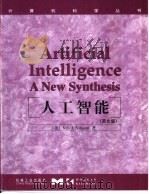
1 Introduction1
1.1 What Is AI?1
1.2 Approaches to Artificial Intelligence6
1.3 Brief History of AI8
1.4 Plan of the Book11
1.5 Additional Readings and Discussion14
Exercises17
ⅠReactive Machines19
2 Stimulus-Response Agents21
2.1 Perception and Action21
2.1.1 Perception24
2.1.2 Action24
2.1.3 Boolean Algebra25
2.1.4 Classes and Forms of Boolean Functions26
2.2 Representing and Implementing Action Functions27
2.2.1 Production Systems27
2.2.2 Networks29
2.2.3 The Subsumption Architecture32
2.3 Additional Readings and Discussion33
Exercises34
3Neural Networks37
3.1 Introduction37
3.2 Training Single TLUs38
3.2.1 TLU Geometry38
3.2.2 Augmented Vectors39
3.2.3 Gradient Descent Methods39
3.2.4 The Windrow-Hoff Procedure41
3.2.5 The Generalized Delta procedure41
3.2.6 The Error-Correction Procedure43
3.3 Neural Networks44
3.3.1 Motivation44
3.3.2 Notation45
3.3.3 The Backpropagation Method46
3.3.4 Computing Weight Changes in the Final Layer48
3.3.5 Computing Changes to the Weights in Intermediate Layers48
3.4 Generalization ,Accuracy, and Overfitting51
3.5 Additional Readings and Discussion54
Exercises55
4 Machine Evolution59
4.1 Evolutionary Computation59
4.2 Genetic Programming60
4.2.1 Program Representation in GP60
4.2.2 The GP Process62
4.2.3 Evolving a Wall-Following Robot65
4.3 Additional Readings and Discussion69
Exercises69
5State Machines71
5.1 Representing the Environment by Feature Vectors71
5.2 Elman Networks73
5.3 Iconic Representations74
5.4 Blackboard Systems77
5.5 Additional Readings and Discussion80
Exercises80
6 Robot Vision85
6.1 Introduction85
6.2 Steering and Automobile86
6.3 Two Stages of Robot Vision88
6.4 Image Processing91
6.4.1 Averaging91
6.4.2 Edge Enhancement93
6.4.3 Combining Edge Enhancement with Averaging96
6.4.4 Region Finding97
6.4.5 Using Image Attributes Other Than Intensity101
6.5 Scene Analysis102
6.5.1 Interpreting Lines and Curves in the Image103
6.5.2 Model -Based Vision106
6.6 Stereo Vision and Depth Information108
6.7 Additional Readings and Discussion110
Exercises111
Ⅱ Search in State Spaces115
7 Agents That Plan117
7.1 Memory Versus Computation117
7.2 State-Space Graphs118
7.3 Searching Explicit State Spaces121
7.4 Feature-Based State Spaces122
7.5 Graph Notation124
7.6 Additional Readings and Discussion125
Exercises126
8 Uninformed Search129
8.1 Formulating the State Space129
8.2 Components of Implicit State-Space Graphs130
8.3 Breadth-First Search131
8.4 Depth-First or Backtracking Search133
8.5 Iterative Deepening135
8.6 Additional Readings and Discussion136
Exercises137
9 Heuristic Search139
9.1 Using Evaluation Functions139
9.2 A General Graph-Searching Algorithm141
9.2.1 Algorithm A142
9.2.2 Admissibility of A145
9.2.3 The Consistency (or Monotone)Condition150
9.2.4 Iterative-Deepening A153
9.2.5 Recursive Best-First Search154
9.3 Heuristic Functions and Search Efficiency155
9.4 Additional Readings and Discussion160
Exercises160
10 Planning, Acting ,and Learning163
10.1 The Sense/Plan/Act Cycle163
10.2 Approximate Search165
10.2.1 Island-Driven Search166
10.2.2 Hierarchical Search167
10.2.3 Limited-Horizon Search169
10.2.4 Cycles170
10.2.5 Building Reactive Procedures170
10.3 Learning Heuristic Functions172
10.3.1 Explicit Graphs172
10.3.2 Implicit Graphs173
10.4 Rewards Instead of Goals175
10.5 Additional Readings and Discussion177
Exercises178
11Alternative Search Formulations and Applications181
11.1 Assignment Problems181
11.2 Constructive Methods183
11.3 Heuristic Repair187
11.4 Function Optimization189
Exercises192
12 Adversarial Search195
12.1 Two-Agent Games195
12.2 The Minimax Procedure197
12.3 The Alpha-Beta Procedure202
12.4 The Search Efficiency of the Alpha-Beta Procedure207
12.5 Other Important Matters208
12.6 Games of Chance208
12.7 Learning Evaluation Functions210
12.8 Additional Readings and Discussion212
Exercises213
Ⅲ Knowledge Representation and Reasoning215
13The Propositional Calculus217
13.1 Using Constraints on Feature Values217
13.2 The Language219
13.3 Rules of Inference220
13.4 Definition of Proof221
13.5 Semantics222
13.5.1 Interpretations222
13.5.2 The Propositional Truth Table223
13.5.3 Satisfiability and Models224
13.5.4 Validity224
13.5.5 Equivalence225
13.5.6 Entailment225
13.6 Soundness and Completeness226
13.7 The PSAT Problem227
13.8 Other Important Topics228
13.8.1 Language Distinctions228
13.8.2 Metatheorems228
13.8.3 Associative Laws229
13.8.4 Distributive Laws229
Exercises229
14 Resolution in the Propositional Calculus231
14.1 A New Rule of Inference: Resolution231
14.1.1 Clauses as wffs231
14.1.2 Resolution on Clauses231
14.1.3 Soundness of Resolution232
14.2 Converting Arbitrary wffs to Conjunctions of Clauses232
14.3 Resolution Refutations233
14.4 Resolution Refutation Search Strategies235
14.4.1 Ordering Strategies235
14.4.2 Refinement Strategies236
14.5 Horn Clauses237
Exercises238
15 The Predicate Calculus239
15.1 Motivation239
15.2 The Language and Its Syntax240
15.3 Semantics241
15.3.1 Worlds241
15.3.2 Interpretations242
15.3.3 Models and Related Notions243
15.3.4 Knowledge244
15.4 Quantification245
15.5 Semantics of Quantifiers246
15.5.1 Universal Quantifiers246
15.5.2 Existential Quantifiers247
15.5.3 Useful Equivalences247
15.5.4 Rules of Inference247
15.6 Predicate Calculus as a Language for Representing Knowledge248
15.6.1 Conceptualizations248
15.6.2 Examples248
15.7 Additional Readings and Discussion250
Exercises250
16Resolution in the Predicate Calculus253
16.1 Unification253
16.2 Predicate-Calculus Resolution256
16.3 Completeness and Soundness257
16.4 Converting Arbitrary wffs to Clause Form257
16.5 Using Resolution to Prove Theorems260
16.6 Answer Extraction261
16.7 The Equality Predicate262
16.8 Additional Readings and Discussion265
Exercises265
17Knowledge-Based Systems269
17.1 Confronting the Real World269
17.2 Reasoning Using Horn Clauses270
17.3 Maintenance in Dynamic Knowledge Bases275
17.4 Rule-Based Expert Systems280
17.5 Rule Learning286
17.5.1 Learning Propositional Calculus Rules286
17.5.2 Learning First-Order Logic Rules291
17.5.3 Explanation-Based Generalization295
17.6 Additional Readings and Discussion297
Exercises298
18 Representing Commonsense Knowledge301
18.1 The Commonsense World301
18.1.1 What Is Commonsense Knowledge?301
18.1.2 Difficulties in Representing Commonsense Knowledge303
18.1.3 The Importance of Commonsense Knowledge304
18.1.4 Research Areas305
18.2 Time306
18.3 Knowledge Representation by Networks308
18.3.1 Taxonomic Knowledge308
18.3.2 Semantic Networks309
18.3.3 Nonmonotonic Reasoning in Semantic Networks309
18.3.4 Frames312
18.4 Additional Readings and Discussion313
Exercises314
19Reasoning with Uncertain Information317
19.1 Review of Probability Theory317
19.1.1 Fundamental Jdeas317
19.1.2 Conditional Probabilities320
19.2 Probabilistic Inference323
19.2.1 A General Method323
19.2.2 Conditional Independence324
19.3 Bayes Networks325
19.4 Patterns of Inference in Bayes Networks328
19.5 Uncertain Evidence329
19.6 D-Separation330
19.7 Probabilistic Inference in Polytrees332
19.7.1 Evidence Above332
19.7.2 Evidence Below334
19.7.3 Evidence Above and Below336
19.7.4 A Namerical Example336
19.8 Additional Readings and Discussion338
Exercises339
20Learning and Acting with Bayes Nets343
20.1 Learning Bayes Nets343
20.1.1 Known Network Structure343
20.1.2 Learning Networks Structure346
20.2 Probabilistic Inference and Action351
20.2.1 The General Setting351
20.2.2 An Extended Example352
20.2.3 Generalizing the Example356
20.3 Additional Readings and Discussion358
Exercises358
Ⅳ Planning Methods Based on Logic361
21The Situation Caluclus363
21.1 Reasoning about States and Actions363
21.2 Some Difficulties367
21.2.1 Frame Axioms367
21.2.2 Qualifications369
21.2.3 Ramifications369
21.3 Generating Plans369
21.4 Additional Readings and Discussion370
Exercises371
22 Planning373
22.1 STRIPS Planning Systems373
22.1.1 Describing States and Goals373
22.1.2 Forward Search Methods374
22.1.3 Recursive STRIPS376
22.1.4 Plans with Run-Time Conditionals379
22.1.5 The Sussman Anomaly380
22.1.6 Backward Search Methods381
22.2 Plan Spaces and Partial-Order Planning385
22.3 Hierarchical Planning393
22.3.1 ABSTRIPS393
22.3.2 Combining Hierarchical and Partial-Order Planning395
22.4 Learning Plans396
22.5 Additional Readings and Discussion398
Exercises400
ⅤCommunication and Integration405
23Multiple Agents407
23.1 Interacting Agents407
23.2 Models of Other Agents408
23.2.1 Varieties of Models408
23.2.2 Simulation Strategies410
23.2.3 Simulated Databases410
23.2.4 The Intentional Stance411
23.3 A Modal Logic of Knowledge412
23.3.1 Modal Operators412
23.3.2 Knowledge Axioms413
23.3.3 Reasoning about Other AgentsKnowledge415
23.3.4 Predicting Actions of Other Agents417
23.4 Additional Readings and Discussion417
Exercises418
24Communication among Agents421
24.1 Speech Acts421
24.1.1 Planning Speech Acts423
24.1.2 Implementing Speech Acts423
24.2 Understanding Language Strings425
24.2.1 Phrase-Structure Grammars425
24.2.2 Semantic Analysis428
24.2.3 Expanding the Grammar432
24.3 Efficient Communication435
24.3.1 Use of Context435
24.3.2 Use of Knowledge to Resolve Ambiguities436
24.4 Natural Language Processing437
24.5 Additional Readings and Discussion440
Exercises440
25 Agent Architectures443
25.1 Three-Level Architectures444
25.2 Goal Arbitration446
25.3 The Triple-Tower Architecture448
25.4 Bootstrapping449
25.5 Additional Readings and Discussion450
Exercises450
Bibliography453
Index493
1999《人工智能 英文版》由于是年代较久的资料都绝版了,几乎不可能购买到实物。如果大家为了学习确实需要,可向博主求助其电子版PDF文件(由(美)(N.J.尼尔森)Nils J.Nilsson著 1999 北京:机械工业出版社 出版的版本) 。对合法合规的求助,我会当即受理并将下载地址发送给你。
高度相关资料
-
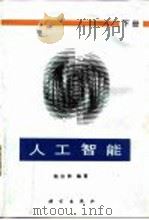
- 人工智能 下
- 1996 北京:科学出版社
-

- 人工智能导论 第3版
- 2020
-

- 人工智能之不能
- 2020
-

- 人工智能专业英语教程
- 2020
-

- 人工智能导论
- 1983
-
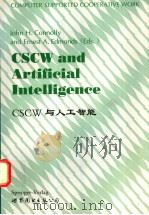
- CSCW与人工智能
- 1998 世界图书出版公司北京公司
-
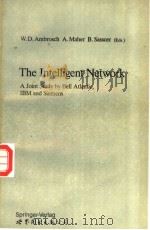
- 智能网络 英文版
- 北京/西安:世界图书出版公司
-

- 人工智能基础
- 1995 北京:水利电力出版社
-
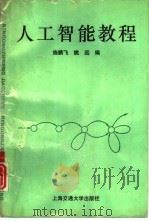
- 人工智能教程
- 1993 上海:上海交通大学出版社
-
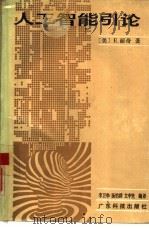
- 人工智能引论
- 1986 广州:广东科技出版社
-
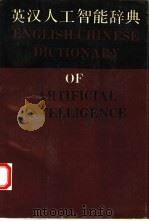
- 英汉人工智能辞典
- 1991 成都:四川科学技术出版社
-

- 智能什么是人工智能
- 1989 北京:春秋出版社
-

- 人工智能
- 1983 北京市:科学出版社
-

- 人工智能原理
- 1983 北京:科学出版社
-

- 人工智能 上
- 1989 北京:科学出版社
提示:百度云已更名为百度网盘(百度盘),天翼云盘、微盘下载地址……暂未提供。➥ PDF文字可复制化或转WORD